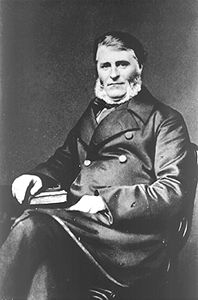Browse "Things"
-
Macleans
Mulroney Fights Back Over Airbus
As usual, Brian Mulroney was dressed for the occasion, impeccably suited in sober, even prime ministerial, blue.This article was originally published in Maclean's Magazine on April 29, 1996
"https://development.thecanadianencyclopedia.ca/images/tce_placeholder.jpg?v=e9dca980c9bdb3aa11e832e7ea94f5d9" // resources/views/front/categories/view.blade.php
https://development.thecanadianencyclopedia.ca/images/tce_placeholder.jpg?v=e9dca980c9bdb3aa11e832e7ea94f5d9
-
Macleans
Mulroney Launches Suit
This article was originally published in Maclean’s magazine on November 27, 1995. Partner content is not updated. Political circles had been buzzing for weeks about a major police investigation into the biggest civil aviation contract ever given by a Canadian government - the 1988 purchase of 34 Airbus A-320 passenger planes from a European consortium for $1.8 billion.
"https://development.thecanadianencyclopedia.ca/images/tce_placeholder.jpg?v=e9dca980c9bdb3aa11e832e7ea94f5d9" // resources/views/front/categories/view.blade.php
https://development.thecanadianencyclopedia.ca/images/tce_placeholder.jpg?v=e9dca980c9bdb3aa11e832e7ea94f5d9
-
Macleans
Mulroney Speaks Out
Brian Mulroney can't stop laughing. Sunk into the well-upholstered couch in his eleventh-floor, downtown Montreal law office, he is trying to read out loud from a glossy report - but keeps breaking into guffaws.This article was originally published in Maclean's Magazine on May 24, 1999
"https://development.thecanadianencyclopedia.ca/images/tce_placeholder.jpg?v=e9dca980c9bdb3aa11e832e7ea94f5d9" // resources/views/front/categories/view.blade.php
https://development.thecanadianencyclopedia.ca/images/tce_placeholder.jpg?v=e9dca980c9bdb3aa11e832e7ea94f5d9
-
Macleans
Mulroney Wins an Apology
Teddy Kennedy was one of the first to call Brian MULRONEY at home last Monday morning with congratulations. The U.S. senator's message, Mulroney later told friends, included the observation that Mulroney "proved that a citizen can take on city hall, and win.This article was originally published in Maclean's Magazine on January 20, 1997
"https://development.thecanadianencyclopedia.ca/images/tce_placeholder.jpg?v=e9dca980c9bdb3aa11e832e7ea94f5d9" // resources/views/front/categories/view.blade.php
https://development.thecanadianencyclopedia.ca/images/tce_placeholder.jpg?v=e9dca980c9bdb3aa11e832e7ea94f5d9
-
Macleans
Mulroney Wins his Costs
Public Relations 400: Case Study (honors students only). The client is a former Canadian prime minister who left office with the lowest poll ratings in history.This article was originally published in Maclean's Magazine on October 20, 1997
"https://development.thecanadianencyclopedia.ca/images/tce_placeholder.jpg?v=e9dca980c9bdb3aa11e832e7ea94f5d9" // resources/views/front/categories/view.blade.php
https://development.thecanadianencyclopedia.ca/images/tce_placeholder.jpg?v=e9dca980c9bdb3aa11e832e7ea94f5d9
-
Article
Multani v. Commission scolaire Marguerite-Bourgeoys (Plain-Language Summary)
The case of Multani v. Commission scolaire Marguerite-Bourgeoys was a court case that took place from 2001 to 2006. It was about the right to practice religion at school. It is also known as the “kirpan case”. A Sikh student, Gurbaj Singh Multani, wanted to wear his kirpan to school for religious reasons. The kirpan is a small knife that Sikhs must always carry with them. Finally, the Supreme Court of Canada ruled that wearing a kirpan must be permitted in order to respect freedom of religion. However, the knife must be secured so as not to threaten the safety of others. (This article is a plain-language summary about the Multani case. If you are interested in reading about this topic in more depth, please see our full-length entry Multani c. Commission scolaire Marguerite-Bourgeoys.)
"https://d2ttikhf7xbzbs.cloudfront.net/787b0637-ecea-46b2-bdd4-801e175a39b3.jpg" // resources/views/front/categories/view.blade.php
https://d2ttikhf7xbzbs.cloudfront.net/787b0637-ecea-46b2-bdd4-801e175a39b3.jpg
-
Article
Multimedia Communications
Multimedia is the combined use of several media, such as video, graphics, sound, lighting and text for the purpose of education or entertainment. More specifically, it refers to the use of digitized media displayed on a computer.
"https://development.thecanadianencyclopedia.ca/images/tce_placeholder.jpg?v=e9dca980c9bdb3aa11e832e7ea94f5d9" // resources/views/front/categories/view.blade.php
https://development.thecanadianencyclopedia.ca/images/tce_placeholder.jpg?v=e9dca980c9bdb3aa11e832e7ea94f5d9
-
Article
Multinational Corporation
A multinational corporation consists of incorporated and unincorporated enterprises comprising parent enterprises and their foreign affiliates. The parent and each of the affiliates are established under the laws and practices of the countries where they are located.
"https://development.thecanadianencyclopedia.ca/images/tce_placeholder.jpg?v=e9dca980c9bdb3aa11e832e7ea94f5d9" // resources/views/front/categories/view.blade.php
https://development.thecanadianencyclopedia.ca/images/tce_placeholder.jpg?v=e9dca980c9bdb3aa11e832e7ea94f5d9
-
Article
Multiple Sclerosis
Multiple Sclerosis (MS) is an autoimmune disease that impacts the body’s central nervous system. As of September 2020 an estimated 2.8 million people are living with MS worldwide. Canada has one of the highest rates of MS in the world with over 90,000 Canadians living with the disease. There is no known cure for MS, but treatments can help address symptoms and slow the progression of the disease.
"https://development.thecanadianencyclopedia.ca/images/tce_placeholder.jpg?v=e9dca980c9bdb3aa11e832e7ea94f5d9" // resources/views/front/categories/view.blade.php
https://development.thecanadianencyclopedia.ca/images/tce_placeholder.jpg?v=e9dca980c9bdb3aa11e832e7ea94f5d9
-
Article
Municipal Administration
The activities of locally elected municipal councils are administered by officials and employees organized into municipal public-service departments (see MUNICIPAL GOVERNMENT).
"https://development.thecanadianencyclopedia.ca/images/tce_placeholder.jpg?v=e9dca980c9bdb3aa11e832e7ea94f5d9" // resources/views/front/categories/view.blade.php
https://development.thecanadianencyclopedia.ca/images/tce_placeholder.jpg?v=e9dca980c9bdb3aa11e832e7ea94f5d9
-
Article
Municipal Finance
Municipal finance is concerned with the revenues and expenditures of municipalities. Revenues are secured from local taxes (see Taxation) and other local revenues and from provincial and federal grants.
"https://development.thecanadianencyclopedia.ca/images/tce_placeholder.jpg?v=e9dca980c9bdb3aa11e832e7ea94f5d9" // resources/views/front/categories/view.blade.php
https://development.thecanadianencyclopedia.ca/images/tce_placeholder.jpg?v=e9dca980c9bdb3aa11e832e7ea94f5d9
-
Article
Municipal Government in Canada
Municipal governments are local elected authorities. They include cities, towns and villages, and rural (county) or metropolitan municipalities. They are created by the provinces and territories to provide services that are best managed under local control; from waste disposal and public transit to fire services, policing, community centres and libraries. A municipal government’s revenue is raised largely from property taxes and provincial grants.
"https://d2ttikhf7xbzbs.cloudfront.net/media/media/025d8897-da53-44a4-9e7e-7c1433e935d1.jpg" // resources/views/front/categories/view.blade.php
https://d2ttikhf7xbzbs.cloudfront.net/media/media/025d8897-da53-44a4-9e7e-7c1433e935d1.jpg
-
Article
Municipal Loan Fund
The Municipal Loan fund, established 10 November 1852 in Canada West, was created largely by Francis HINCKS, co-premier of the Province of Canada, whose government's central policy was railway development.
"https://d2ttikhf7xbzbs.cloudfront.net/media/media/e75f49df-4ccf-4613-bcbb-01819f3f0479.jpg" // resources/views/front/categories/view.blade.php
https://d2ttikhf7xbzbs.cloudfront.net/media/media/e75f49df-4ccf-4613-bcbb-01819f3f0479.jpg
-
Article
Municipal-Provincial Relations
Municipalities in Canada are similar to provincial governments in a number of important respects.
"https://development.thecanadianencyclopedia.ca/images/tce_placeholder.jpg?v=e9dca980c9bdb3aa11e832e7ea94f5d9" // resources/views/front/categories/view.blade.php
https://development.thecanadianencyclopedia.ca/images/tce_placeholder.jpg?v=e9dca980c9bdb3aa11e832e7ea94f5d9
-
Macleans
Munk's Indonesian Gold Coup
On Nov. 14, Peter Munk left his presidential suite at the Jakarta Grand Hyatt and headed to the government offices of Ida Bagus Sudjana, Indonesia's minister of mines and energy.This article was originally published in Maclean's Magazine on December 9, 1996
"https://d2ttikhf7xbzbs.cloudfront.net/media/media/dcd04c48-984b-4d14-b4ee-a60f385de567.jpg" // resources/views/front/categories/view.blade.php
https://d2ttikhf7xbzbs.cloudfront.net/media/media/dcd04c48-984b-4d14-b4ee-a60f385de567.jpg
